Template for writing a letter of resignation
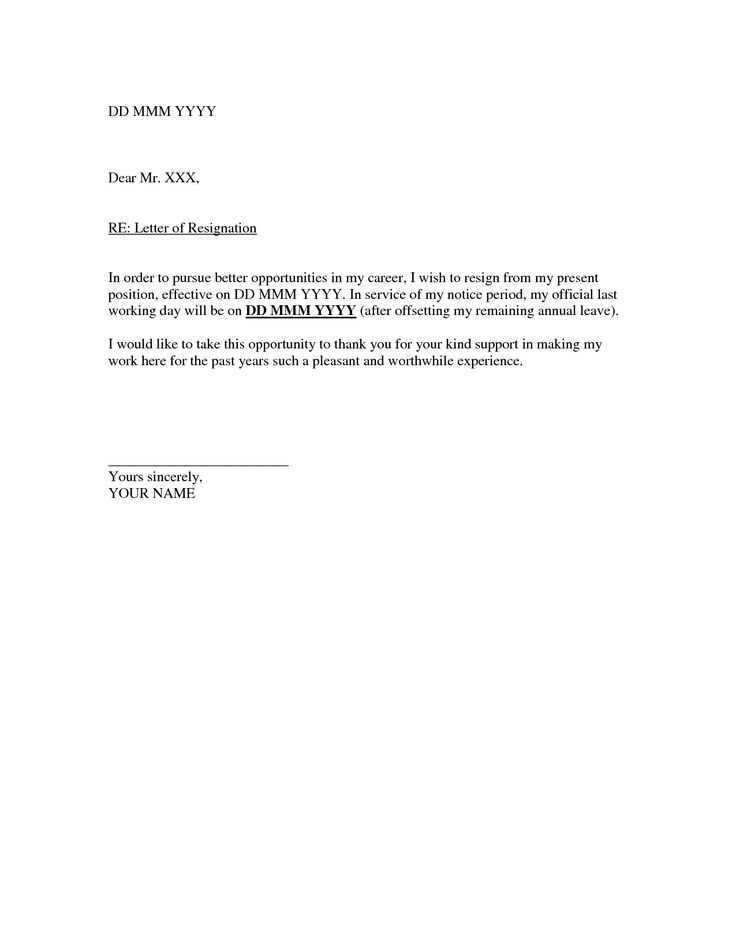
To write a resignation letter that leaves a positive impression, focus on being direct, respectful, and clear. Begin by stating your intent to resign and provide a specific date for your last working day. This helps set clear expectations and ensures a smooth transition.
Be concise and polite–there is no need to go into unnecessary detail about your reasons for leaving, unless you feel it’s necessary for context. Keep the tone respectful, expressing gratitude for the opportunity you’ve had with the company. Acknowledge your experience without sounding overly formal or too casual.
Offer assistance in the transition process. You can mention that you are willing to help with training a replacement or ensure the handover of responsibilities. This gesture shows professionalism and can leave a lasting positive impression on your employer.
Here’s the revised version:
When writing your resignation letter, keep the tone respectful and direct. Start by clearly stating your intent to resign, specifying your last working day. Avoid unnecessary details, and keep the message brief. Here’s a format you can follow:
Template for Resignation Letter:
- Subject: Resignation Letter – [Your Name]
- Greeting: Address your manager or supervisor formally, using their appropriate title.
- Body:
- State your resignation clearly: “I am writing to formally resign from my position as [Your Position] at [Company Name], effective [Date].”
- Express gratitude for the opportunities and experiences gained during your employment.
- Offer assistance with the transition or provide a notice period, if applicable.
- Closing: Sign off with a formal closing such as “Sincerely” or “Best regards” followed by your name.
This approach keeps things professional and courteous, ensuring you leave on good terms while maintaining clarity.
- Template for Writing a Resignation Letter
A resignation letter should be brief and clear. It should include the necessary details like your intention to leave, the date of your resignation, and your gratitude towards the company. Keep the tone respectful and positive, even if you are leaving for reasons that are not entirely favorable.
1. Start with a formal opening
Address your resignation letter directly to your supervisor or manager. Use a professional greeting like “Dear [Manager’s Name],” or “To [Department Name],”.
2. Clearly state your resignation
In the first paragraph, clearly state that you are resigning from your position. Mention the title of your position and the effective date of your resignation, typically providing at least two weeks’ notice unless otherwise required.
Example: “I am writing to formally resign from my position as [Job Title], effective [Date].”
3. Express gratitude
Even if you are leaving for negative reasons, thank your employer for the opportunity to work at the company. This maintains goodwill and leaves the door open for future opportunities.
Example: “I appreciate the opportunities and experiences I have gained during my time at [Company Name].”
4. Offer assistance during the transition
Offer to help train a replacement or assist with the transition to make the process smoother for the company. This shows professionalism and can help leave a positive impression.
Example: “I am willing to help in any way I can during the transition period.”
5. Close on a positive note
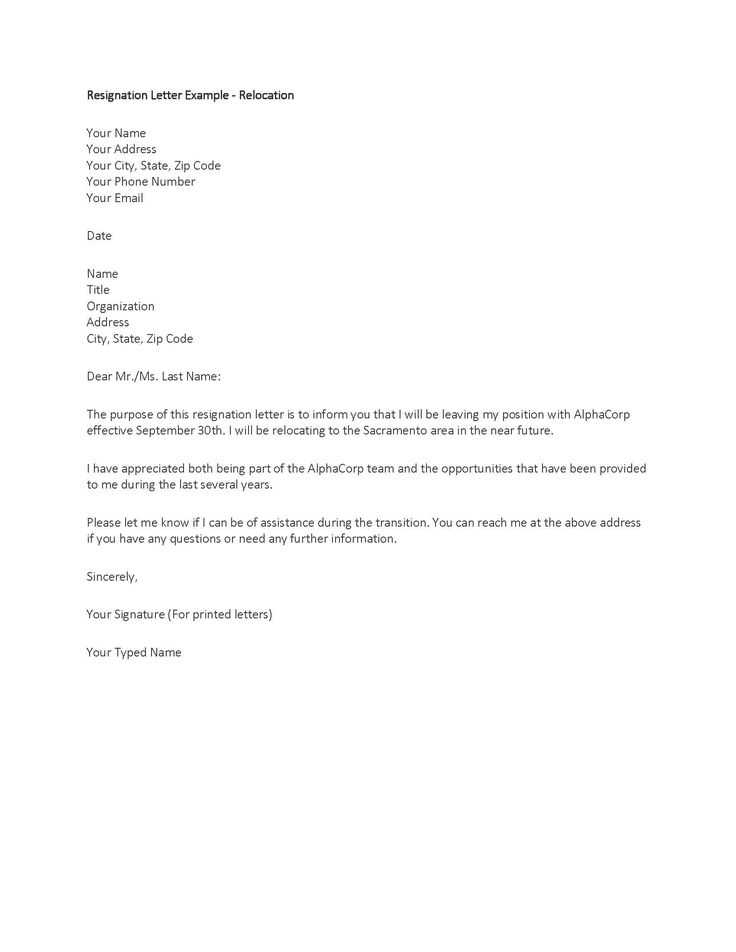
End the letter with a warm closing statement. Reaffirm your gratitude and express your best wishes for the company’s future.
Example: “Thank you again for the opportunity to work with such a talented team. I wish the company continued success.”
Sign off with “Sincerely” followed by your name.
Focus on professionalism and clarity in your resignation letter. The tone should reflect respect and gratitude, regardless of the circumstances. Maintain a neutral yet positive tone, even if you’re leaving due to dissatisfaction. Avoid sarcasm or negative remarks about your experience, as they can come across as unprofessional.
Be Brief and Direct
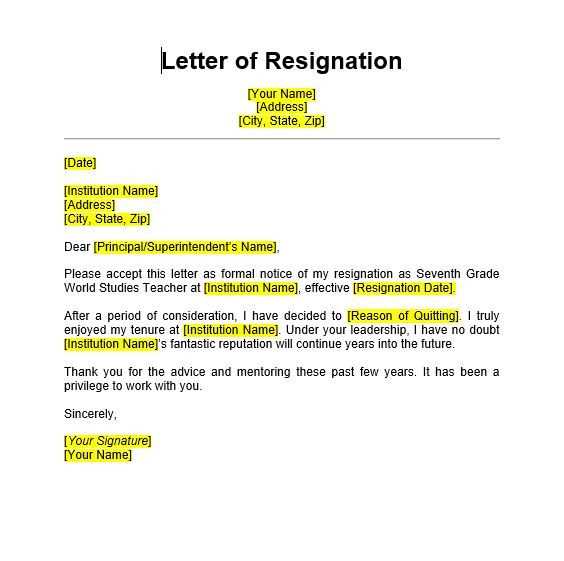
Keep your message concise. Clearly state your resignation and provide the necessary details, such as your last working day. Avoid long explanations or unnecessary justifications. It’s best to stick to the facts while maintaining a polite tone.
Express Gratitude
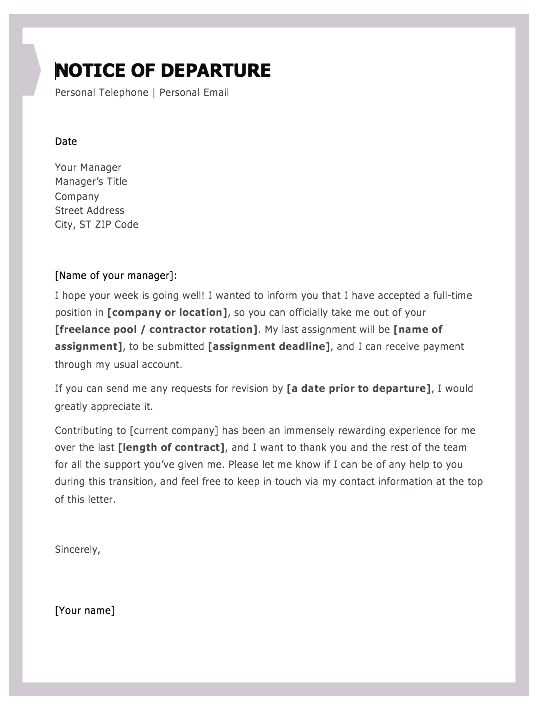
Even if your decision to leave was a difficult one, show appreciation for the opportunity you had. A simple statement like, “I am grateful for the experiences and opportunities I’ve had here,” can leave a positive final impression.
State your intention to resign clearly. Make sure your message conveys your decision to leave the company without ambiguity. This avoids confusion and makes it easier for both parties to handle the transition process.
Important Details to Add
Include your last working day. This ensures there is no misunderstanding about when you’ll officially depart. Typically, it is standard to give two weeks’ notice, but this can vary depending on your employment contract.
Reason for Resignation
Although it’s not mandatory, briefly stating the reason for your resignation can provide clarity. Whether it’s for personal growth, new opportunities, or other professional reasons, providing context helps maintain a positive relationship. Keep it concise and respectful.
Gratitude and Acknowledgments
Express appreciation for the opportunities the company has provided you. A short thank-you message goes a long way in leaving a lasting positive impression and helps maintain good rapport with your employer.
Offer Assistance During the Transition
Offer to help train a replacement or to wrap up important tasks before your departure. This shows your commitment to a smooth transition and leaves a good final impression.
Example Format
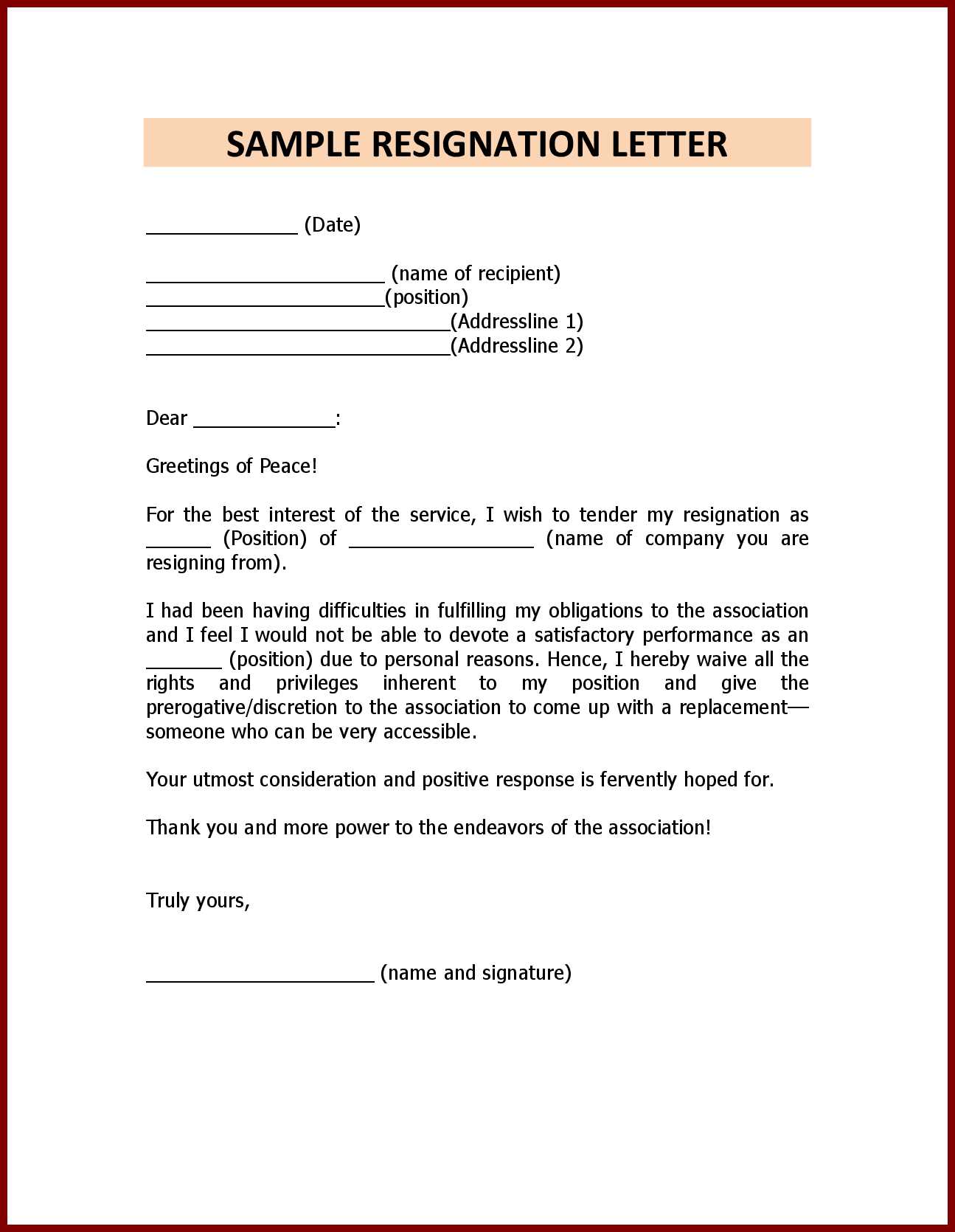
| Element | Recommendation |
|---|---|
| Intention to Resign | Clearly state you are resigning and specify your last working day. |
| Reason for Resignation | Optionally, provide a brief explanation, keeping it professional and positive. |
| Gratitude | Thank the employer for the opportunity and experiences. |
| Transition Assistance | Offer to help with training or completing key tasks during your notice period. |
Clearly state your final working day in your resignation letter to avoid confusion. For example, write: “My last working day will be [date].” Choose a date that aligns with your notice period or any agreements you have with your employer. Ensure the date allows enough time for a smooth transition, both for you and your team.
If you’re flexible, consider offering options: “I am available until [date], but I can adjust if needed.” This shows your willingness to assist during the handover process.
Double-check your company’s policy on resignation notice periods. Specify the exact end date according to this requirement to maintain professionalism.
State your reason for leaving clearly and briefly. Focus on aspects that reflect your career goals, personal growth, or a desire for new challenges. Avoid negativity about your current employer, colleagues, or work environment. Instead, emphasize how this move aligns with your aspirations or fits your long-term plans. If possible, mention skills you aim to develop or projects you’re passionate about pursuing. Keep your tone neutral and positive to maintain professionalism.
For example, “I am seeking a position that offers greater opportunities for leadership growth” or “I am looking to explore new areas in my field.” This approach shows maturity and foresight while avoiding sounding defensive or dissatisfied with your current role.
Offer help as soon as you know the exact date of your departure. The sooner you make the offer, the more time you give your employer and colleagues to plan for the transition.
Be clear about the kind of assistance you can provide. You may suggest helping with training a replacement, documenting key processes, or being available for follow-up questions after you’ve left. Specify the time and effort you’re willing to invest to ensure a smooth handover.
Offer support during your notice period, but avoid overcommitting yourself. Your primary responsibility is to complete your tasks and assist in a way that’s sustainable for both you and the team. Set clear boundaries and ensure you’re not taking on more than you can handle.
Timing matters–offer help at a stage where it will have the most impact. For instance, provide assistance during the knowledge transfer phase, rather than after you’ve left. This helps prevent disruption and ensures your team isn’t left scrambling.
- Assist in transferring client relationships or projects where your involvement is key.
- Offer to write comprehensive handover documents for your role, outlining ongoing tasks and challenges.
- Suggest a meeting with your replacement or other colleagues to go over pending tasks and details.
Before sending your resignation letter, carefully review it for any spelling, grammar, or punctuation errors. Mistakes can undermine the professionalism of your message. Read it out loud to ensure it flows naturally and clearly conveys your intent. Check for clarity, and confirm that your tone remains respectful and concise. Also, verify that all dates and other specifics are accurate.
Once you’ve proofread the content, take a break and return to it with fresh eyes. This second look can often catch details you missed. Consider asking a trusted colleague or friend to review the letter as well, as they may offer valuable feedback.
Finally, ensure that your contact information is correct and your signature is appropriately placed. Once everything is confirmed, save a copy for your records before sending it to your employer.
Begin your resignation letter with a clear statement of your intent to resign, including your position and the effective date. Be direct but courteous, ensuring that your tone remains professional.
Example: “I am writing to formally resign from my position as [Job Title] at [Company Name], with my last working day being [Date].”
Next, express gratitude for the opportunities and experiences you’ve had at the company. Keep it brief but sincere, focusing on what you’ve gained or enjoyed during your time there.
Example: “I appreciate the opportunities I’ve had to grow professionally and personally while working with such a talented team.”
If you feel it’s appropriate, offer to assist in the transition process. This shows professionalism and goodwill, but it’s not always necessary.
Example: “I am happy to help in the transition process and ensure a smooth handover of my responsibilities.”
Finally, conclude with a polite closing. Offer your best wishes for the company’s future success and reaffirm your appreciation.
Example: “Thank you again for the opportunity. I wish [Company Name] continued success.”